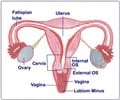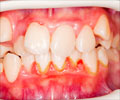Treatment of von Willebrand's Disease
Patients with vWD normally require no regular treatment, although they are always at increased risk for bleeding. For more serious bleeding, medications that can raise the von Willebrand factor (VWF) level and thereby limit bleeding are available. A paediatric or adult haematologist needs to be consulted.
The goal of therapy is to correct the defect in platelet adhesiveness and the defect in blood coagulation. These are achieved by raising the effective vWF level and factor VIII level respectively.
The drug desmopressin (1-deamine-8-D-arginine vasopressin [DDAVP]) has become a mainstay of therapy for most patients with mild
Plasma products are used for patients with von Willebrand disease who do not respond to
The adjunctive use of antifibrinolytic agents, such as å-aminocaproic acid or












